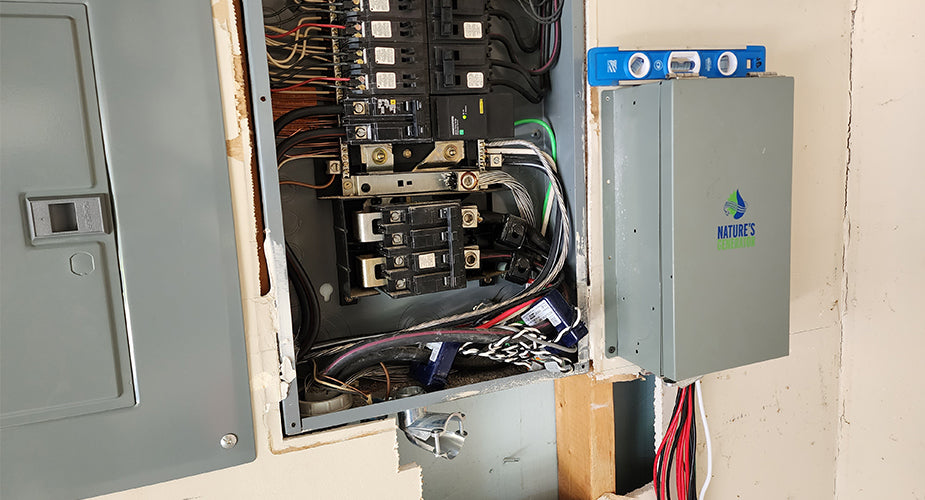Imagine you're in your home, trying to change a light fixture or fix a faulty outlet. You open up the electrical box, and there they are --- a maze of wires, each a different color, seeming to go in every direction. It can be overwhelming, even intimidating. But what if you knew that each of those wires had a specific purpose and understanding their colors could make your home safer?
Electrical wire colors are not just random. They play an important role in electrical systems by providing a standardized method to identify and differentiate various wires and their functions. You can look at them as a guide to enable users to work on electrical systems more effectively and safely.
In this article, we'll take you through the basics of electrical wire colors, why they're important, and how you can use this knowledge to keep your home and family safe.
A brief history:
The development of wiring color codes can be traced back to the early days of electrical power systems. In the 1928 edition of the National Electrical Code (NEC), there was a requirement to standardize the color of ground wires, then known as grounding conductors, to be either white or natural gray. This standardization became necessary as electrical technology advanced, highlighting the need for a consistent approach to identifying and organizing wires. Today, the NEC provides guidelines and standards for electrical installations in the United States, ensuring uniformity and safety through specific color codes for different types of wires.
U.S. Wire Color Code for 120V, 208V and 240V

Electrical Wire Color Code: Understanding the Basics and Applications
Let us now explore the significance of each wire color and how they are used in various electrical applications:
Black Wire
The black wire is commonly used for power in circuits and is often connected to the "hot" terminal of an outlet or switch. It carries the electrical current from the source to the load (such as a light fixture or appliance). Note that for hot wires, it is necessary to turn off the circuit breaker before working on these types of wires as they carry a live current, so always treat them with caution.
Red Wire (secondary hot wires)
Similar to the black wire, the red wire is also used for power in circuits. It can indicate an alternate phase, interconnection, or switch leg in a circuit.
Blue Wire
These wire are commonly used as travelers in three-way and four-way switch wiring, allowing for multiple switches to control a single light fixture.
White or Gray Wire
White or gray wires are neutral wires, completing the circuit and carrying current back to the electrical panel. They are essential for the safe operation of electrical systems, providing a path for current to return to the source.
Green with a Yellow Stripe , Green, Bare Copper Wire
These wires are used for grounding, providing a safe path for electrical current to flow to the ground in case of an electrical surge or fault. Grounding is important for protecting against electrical shock and preventing damage to electrical equipment.
Why understanding wiring color codes is important as a homeowner:
As a homeowner, understanding wiring color codes is important for several reasons. While it is always best and recommended to leave electrical work to the professionals or electricians, having a basic understanding of wiring color codes is still important, especially for simple electrical tasks. some reasons:
1. Safety - Knowing the purpose of each wire and its color can help you identify potential hazards and take necessary precautions. For example, knowing that a red wire is typically a live or hot wire can help you avoid touching it without proper insulation or turning off the power.
2. Maintenance - With knowledge of wiring colors, you can perform basic maintenance tasks more confidently, such as replacing a light fixture or installing a new outlet. This can save you money on hiring an electrician for simple tasks.
3. Compliance - Even if you plan to hire an electrician for modifications or additions to your electrical system, understanding wiring color codes is crucial to ensure compliance with safety standards and regulations. It also helps you identify any potential issues or hazards, ensuring that your electrical system remains safe and up to code.
4. Communication: When discussing electrical work with professionals, having a basic understanding of wiring color codes allows you to communicate more effectively and understand their recommendations or instructions.

Connecting Color-Coded Wires in Solar Panel Systems
If you are interested in integrating a solar panel system into your home's electrical system, a good understanding of color-coded wires is important. Solar installations involve connecting the panels to an inverter, converting DC power to AC power for home use. DC wires are typically red (positive), black (negative), and white or gray (grounding). AC wires vary by voltage and phase, with colors like black, red, blue (phase), white (neutral), green, green with a yellow stripe, or bare (grounding). Properly identifying and connecting these wires ensures a safe and efficient installation of your solar panel system.
Tip: Since solar panel installation can be more on the complex side, it's best to consult the professionals for the job. When it comes to solar products, Nature’s Generator is a top choice. One product to check out is the Powerhouse, which offers a maximum power output of 120V/240V 7200Watt and can power almost anything. For more information on the best home solar-powered system and to assist you in determining the right setup for your requirements, feel free to get in touch with the Nature's Generator team here.
Final Thoughts
Understanding these color codes is essential for anyone working with electrical systems. It helps ensure that wires are properly identified and connected, reducing the risk of electrical hazards. Whether you're a professional electrician or a homeowner, knowing and following wiring color codes is crucial for safe and effective electrical work.
* We want to give credit where credit is due. Professional writer, Michelle Gamana, contributed research and content to this blog titled: Electrical Wire Color Code Thank you, Michelle, for your contributions!





